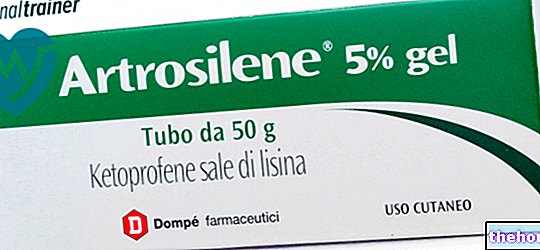Active ingredients: Calcium (Calcium carbonate), Cholecalciferol
IDEOS 500 mg / 400 IU chewable tablets
Indications Why is Ideos used? What is it for?
This medicine is intended for adults.
This medicine supplies the body with calcium and vitamin D3 (also called cholecalciferol).
This medicine is used:
- In case of vitamin D and calcium deficiency in the elderly.
- In association with osteoporosis treatments (a condition in which bone mass decreases and bone fragility increases), when there is a deficiency or risk of vitamin D and calcium deficiency
Contraindications When Ideos should not be used
Do not take IDEOS
- if you are allergic (hypersensitive) to calcium, vitamin D or any of the other ingredients of this medicine
- if you are allergic (hypersensitive) to peanuts or soy, due to the presence of soybean oil
- if you have abnormally high levels of calcium in the blood (hypercalcaemia).
- if you have high levels of calcium excreted in the urine (hypercalciuria).
- if you have a condition that leads to hypercalcaemia and / or hypercalciuria (e.g. overactive parathyroid glands, bone marrow disease (myeloma), malignant bone tumor (bone metastases).
- if you suffer from severe kidney disease (kidney failure).
- if you suffer from kidney stones (calcium lithiasis) or calcium deposits in the kidneys (nephrocalcinosis).
- if you have an excessive intake of vitamin D (hypervitaminosis D).
Precautions for use What you need to know before taking Ideos
If you have been told by your doctor that you are intolerant to some sugars, contact your doctor before taking this medicine.
Talk to your doctor or pharmacist before taking IDEOS:
- If you have had a long period of immobility and if you have a high concentration of calcium in your blood and / or urine. Your doctor will allow you to take this medicine once you have started walking again.
- In case of long-term treatment, you need to have regular blood and urine tests to monitor calcium levels. Monitoring is particularly important in the elderly and when treatment is taken in combination with cardiac glycosides (eg digoxin) or diuretics. Based on the result, the doctor may decide to reduce or even stop the treatment.
- High levels of calcium and vitamin D can be harmful to health. Talk to your doctor or pharmacist.
- This medicine contains sugars (sorbitol and sucrose). Patients with rare hereditary problems of fructose intolerance, glucose-galactose malabsorption or sucrase-isomaltase deficiency should not take this medicine.
You must inform your doctor:
- If you have sarcoidosis, a condition whose most common symptoms are tiredness, an increase in the size of lumps and inflammation of the lungs and other organs.
- If you have kidney disease (kidney failure) If you are unsure, ask your doctor or pharmacist.
Interactions Which drugs or foods can modify the effect of Ideos
Tell your doctor or pharmacist if you take:
- Cardiac glycosides (medicines used to treat heart conditions), as they can cause additional side effects
- Bisphosphonates, or medicines containing strontium (used for osteoporosis)
- Thiazide diuretics (medicines used to treat high blood pressure or edema), as they can increase the amount of calcium in the blood.
- Tetracycline antibiotics (medicines used to treat bacterial infections)
- Other medicines or supplements containing vitamin D
- medicines or supplements containing iron or zinc
- Estramustine (a medicine used to treat some prostate cancers)
- Thyroid hormones, used for thyroid disease
- Orlistat (a medicine used to treat obesity), as it can reduce the amount of vitamin D3 absorbed.
You must wait at least:
- two hours between taking IDEOS and taking the following medicines: medicines containing iron or zinc, bisphosphonates, estramustine, thyroid hormones.
- 3 hours in case of simultaneous treatment with tetracycline-based antibiotics.
Tell your doctor or pharmacist if you are taking or have recently taken any other medicines, including medicines obtained without a prescription.
IDEOS with food and drink
Possible interaction with food. You should take IDEOS before or after meals, which contain:
- oxalic acid (spinach, rhubarb, sorrel, cocoa, tea ...),
- phosphate (pork, ham, sausages, processed cheese, pudding, drinks containing cola ...)
- phytic acid (whole grains, dried vegetables, oil seeds, chocolate ...).
Warnings It is important to know that:
Pregnancy and breastfeeding
Pregnant or breastfeeding women can take IDEOS, provided that the daily intake does not exceed one tablet.
During breastfeeding as calcium and vitamin D3 pass into breast milk it is necessary to check with your doctor if the baby is receiving other products containing vitamin D3.
If you are pregnant or breast-feeding, think you may be pregnant or are planning to have a baby, ask your doctor or pharmacist for advice before taking this medicine.
Important information about some of the ingredients of IDEOS
This medicine contains sorbitol, sucrose (see Warnings and precautions),
This medicine also contains soybean oil. If you are allergic to peanuts or soya, do not take this medicine. Ask your doctor for advice
Dose, Method and Time of Administration How to use Ideos: Posology
Dosage
Always take IDEOS exactly as your doctor has told you.
If in doubt, consult your doctor or pharmacist. The recommended dose, for adults only, is one tablet twice a day.
Overdose What to do if you have taken an overdose of Ideos
If you take more IDEOS than you should:
The following symptoms may occur: loss of appetite, excessive thirst, feeling sick (nausea), vomiting, constipation, abdominal pain, muscle weakness, fatigue, mental health problems, increased urinary elimination, bone pain, kidney stones.
In such cases, stop taking IDEOS and contact your doctor immediately (who will undertake the necessary procedures).
If you take a large amount of IDEOS for a long period of time, calcium deposits may occur in your blood vessels or body tissues.
If you forget to take IDEOS:
Do not take a double dose to make up for a forgotten dose. If you have any further questions on the use of this medicine, ask your doctor or pharmacist.
Side Effects What are the side effects of Ideos
Like all medicines, IDEOS can cause side effects, although not everybody gets them.
Uncommon side effects (affects 1 to 10 users in 1000):
- excess calcium levels in the blood or urine.
Rare side effects (affects 1 to 10 users in 10,000):
- constipation, wind, feeling sick (nausea), abdominal pain, diarrhea,
- itching, rash and hives.
There may also be cases of severe allergic (hypersensitivity) reactions such as swelling of the face, lips, tongue or throat.
Reporting of side effects
If you get any side effects, talk to your doctor or pharmacist. This includes any possible side effects not listed in this leaflet.
You can also report side effects directly via the national reporting system at https://www.aifa.gov.it/content/segnalazioni-reazioni-avverse. By reporting side effects you can help provide more information on safety. of this medicine.
Expiry and Retention
- Keep this medicine out of the sight and reach of children
- The cap contains small granules of silica gel to keep the tablets dry. Keep the cap out of the sight and reach of children. Do not ingest the silica gel granules.
- do not use IDEOS after the expiry date which is stated on the tube and carton. The expiry date refers to the last day of that month.
- Do not store above 25 ° C
Medicines should not be disposed of via wastewater or household waste. Ask your pharmacist how to throw away medicines you no longer use. This will help protect the environment.
What does IDEOS
The active ingredients are:
Calcium 500 mg corresponding to Calcium carbonate 1250 mg
Cholecalciferol (vitamin D3) 400 IU corresponding to concentrated cholecalciferol (powder form) 4 mg
For one tablet.
The other ingredients are: Xylitol, Sorbitol, Povidone, Magnesium stearate, Lemon flavor (flavoring preparations, natural flavoring substances, maltodextrin, acacia gum, sodium citrate, acid
Description of what IDEOS looks like and contents of the package
This medicine is a square, off-white chewable tablet. Each pack contains 2, 5 or 10 tubes of 10 tablets or 2, 4, 6 tubes containing 15 tablets.
Source Package Leaflet: AIFA (Italian Medicines Agency). Content published in January 2016. The information present may not be up-to-date.
To have access to the most up-to-date version, it is advisable to access the AIFA (Italian Medicines Agency) website. Disclaimer and useful information.
01.0 NAME OF THE MEDICINAL PRODUCT
IDEOS 500 MG / 400 IU CHEWABLE TABLETS
02.0 QUALITATIVE AND QUANTITATIVE COMPOSITION
For one tablet
Excipients with known effects: sorbitol, sucrose, hydrogenated soybean oil.
For the full list of excipients, see section 6.1.
03.0 PHARMACEUTICAL FORM
Chewable tablets.
Gray-white, square tablets.
04.0 CLINICAL INFORMATION
04.1 Therapeutic indications
Correction of combined vitamin D and calcium deficiency in the elderly.
Intake of vitamin D and calcium as a supplement to specific therapy for the treatment of osteoporosis in patients with established combined deficiency of vitamin D and calcium, or in patients with a high risk of such deficiency.
04.2 Posology and method of administration
For use in adults only.
For oral use.
Chew or dissolve the tablets in the mouth.
One tablet twice a day.
04.3 Contraindications
- Hypersensitivity to the active substance or to any of the excipients listed in section 6.1.
- This product contains partially hydrogenated soybean oil. Patients allergic to peanut or soy should not take this medicine.
- Hypercalcemia, hypercalciuria and pathologies and / or conditions leading to hypercalcemia and / or hypercalciuria (e.g. myeloma, bone metastases, primary hyperparathyroidism).
- Kidney stones (nephrolithiasis, nephrocalcinosis).
- Hypervitaminosis D.
- Kidney failure.
04.4 Special warnings and appropriate precautions for use
In the event of prolonged immobilization in patients with hypercalciuria and / or hypercalcaemia, treatment with vitamin D and calcium should only be resumed when the patient begins to move again (see section 4.3).
In case of long-term treatment it is recommended to monitor the concentration of calcium in serum and urine, as well as renal function (serum creatinine concentrations). If the elimination of calcium in the urine exceeds the value of 7.5 mmol / 24 h (300 mg / 24 h), it is recommended to reduce or temporarily discontinue treatment. Monitoring is particularly important in elderly patients, in case of combined treatment with cardiac glycosides, or diuretics (see section 4.5) and in patients who are frequently prone to the formation of kidney stones.
In case of hypercalcaemia or signs of problems with renal function, the dose should be reduced or treatment discontinued.
In case of combined treatment with digitalis, diphosphonates, thiazide diuretics, tetracyclines: see section 4.5
Consider the dose of vitamin D per serving unit (400 IU) and take into account any other vitamin D prescriptions.
Additional administration of vitamin D or calcium should be carried out under close medical supervision, and weekly monitoring of the serum and urine calcium concentration is imperative.
The product should be prescribed with caution in patients with sarcoidosis due to the possibility of increased conversion of vitamin D to its active form. In these patients it is necessary to monitor the level of calcium in serum and urine.
The product should be used with caution in patients with renal insufficiency and, furthermore, the effects on calcium and phosphate homeostasis should be monitored. The risk of soft tissue calcification should be considered. In patients with severe renal insufficiency. , vitamin D3 in the form of cholecalciferol is not metabolized in a normal way and other forms of vitamin D3 must be used (see section 4.3).
The product contains sorbitol, patients with rare hereditary problems of fructose intolerance should not take this medicine.
The product contains sucrose. Therefore, patients with rare hereditary problems of fructose intolerance, glucose-galactose malabsorption or sucrase-isomaltase deficiency should not take this medicine.
The product is not indicated for use in children and adolescents.
04.5 Interactions with other medicinal products and other forms of interaction
Associations requiring precautions for use :
Digital
Risk of dysrhythmia. The oral administration of calcium and vitamin D increases the toxicity of the digitalis itself. In this case, close medical surveillance and, if necessary, an electrocardiographic and serum calcium concentration monitoring is necessary.
Diphosphonates
Risk of reduced gastrointestinal absorption of the diphosphonate.
It is recommended that a period of time of at least two hours elapse before taking calcium.
Thiazide diuretics
They reduce urinary excretion of calcium. Monitoring of calcium is recommended.
Oral tetracyclines by mouth
Possible reduction in the absorption of tetracyclines. It is advisable to delay calcium intake by at least three hours.
In the case of additional administration of vitamin D, in high doses, weekly monitoring of serum and urinary calcium is absolutely necessary.
Salts of iron and zinc
Risk of reduced gastrointestinal absorption of iron or zinc. It is advisable to wait at least two hours before taking calcium.
Strontium
Risk of reducing the bioavailability of strontium by 60 to 70% with concomitant administration of calcium-containing products. It is advisable to avoid ingestion of calcium immediately before and after taking medicines containing strontium.
Estramustine
Risk of decreased gastrointestinal absorption of estramustine. It is advisable to wait a minimum period of two hours before taking calcium.
Thyroid hormones
Risk of decreased gastrointestinal absorption of levothyroxine. It is advisable to wait a minimum period of two hours before taking calcium.
Orlistat
Treatment with orlistat can potentially decrease the absorption of Vitamin D.
Foods
Possible interaction with food, eg. foods containing oxalic acid (spinach, rhubarb, sorrel, cocoa, tea, etc.), phosphate (pork, ham, sausages, processed cheese, pudding, drinks containing cola, etc.) or phytic acid (whole grains, freeze-dried vegetables, seeds oilseeds, chocolate, etc.). It is therefore recommended that meals containing such foods be taken some time before or after ingestion of the product.
04.6 Pregnancy and lactation
This medicine can be used during pregnancy and breastfeeding. However, the daily dose should not exceed 1500 mg of calcium and 600 IU of vitamin D3.
An overdose of cholecalciferol should be avoided during pregnancy:
- Vitamin D overdose during pregnancy has been shown to produce teratogenic effects in animals;
- in pregnant women an overdose of vitamin D should be avoided, since a permanent state of hypercalcemia can lead to physical and mental retardation, supravalvular aortic stenosis and retinopathy in the child.
However, there are several reports on cases of administration of very high doses to hypoparathyroid women, with the birth of normal children.
Vitamin D and its metabolites pass into breast milk and this effect should be taken into account when additional vitamin D is given to the baby.
04.7 Effects on ability to drive and use machines
They are neither known nor expected.
04.8 Undesirable effects
Side effects are listed below by system organ class and frequency. Frequencies are defined as: uncommon (> 1 / 1,000, 1 / 10,000,
Disorders of the immune system
Cases of hypersensitivity reactions such as angioedema or laryngeal edema have been reported.
Metabolism and nutrition disorders
Uncommon: hypercalcemia and hypercalciuria
Gastrointestinal disorders
Rare: constipation, flatulence, nausea, abdominal pain and diarrhea.
Skin and subcutaneous tissue disorders
Rare: itching, rash and urticaria
Reporting of suspected adverse reactions
Reporting of suspected adverse reactions occurring after authorization of the medicinal product is important as it allows continuous monitoring of the benefit / risk balance of the medicinal product. Healthcare professionals are asked to report any suspected adverse reactions via the national reporting system. "address www.agenziafarmaco.gov.it/it/responsabili.
04.9 Overdose
Overdose results in hypervitaminosis and hypercalcemia. Symptoms of hypercalcaemia may include: anorexia, thirst, nausea, vomiting, constipation, abdominal pain, muscle weakness, fatigue, mental disorders, polydipsia, polyuria, bone pain, renal calcinosis, kidney stones, and in severe cases, cardiac arrhythmia. Excessive hypercalcemia can lead to coma and death. Continuously high calcium levels can lead to irreversible kidney damage and soft tissue calcification.
Treatment of hypercalcemia: All calcium and vitamin D3-based treatments must be suspended. Thiazine diuretic, lithium, vitamin A and cardiac glycosides treatments must also be suspended. Gastric lavage should be performed on patients with alteration problems state of consciousness Rehydrate and, depending on the degree of severity, isolated or combined treatment with loop diuretics, bisphosphonates, calcitonin and corticosteroids should be considered. Serum electrolytes, renal function and diuresis should be monitored. In severe cases, blood calcium and ECG should be monitored.
05.0 PHARMACOLOGICAL PROPERTIES
05.1 Pharmacodynamic properties
Pharmacotherapeutic group: Vitamin D and Calcium supplement
ATC code: A12AX
The intake of vitamin D corrects an insufficient intake of vitamin D.
Vitamin D increases the intestinal absorption of calcium and its fixation in the osteoid tissue.
Calcium intake corrects a calcium deficiency in the diet.
The calcium requirement commonly indicated for the elderly is 1500 mg / day.
The optimal amount of vitamin D in the elderly is 500 - 1000 IU / day.
Vitamin D and calcium correct secondary senile hyperparathyroidism.
05.2 Pharmacokinetic properties
Calcium carbonate
The release of calcium ions from calcium carbonate is a function of the pH present in the gastric cavity.
Calcium is absorbed essentially in the first section of the small intestine.
The percentage of calcium absorbed in the gastrointestinal tract is in the order of 30% of the ingested dose.
Calcium is eliminated with sweat and gastrointestinal secretions.
Urinary calcium excretion depends on glomerular filtration and the rate of tubular calcium reabsorption.
Vitamin D3
Vitamin D3 is absorbed in the intestine and transported, through protein binding, in the blood to the liver (first hydroxylation) and kidney (second hydroxylation). Non-hydroxylated vitamin D3 is accumulated in reserve compartments such as muscle tissue and the adipose one.
Its plasma half-life is of the order of several days; it is eliminated in the faeces and urine.
05.3 Preclinical safety data
No relevant data.
06.0 PHARMACEUTICAL INFORMATION
06.1 Excipients
Xylitol
Sorbitol
Polyvinylpyrrolidone
Lemon flavor *
Magnesium stearate
* Composition of lemon flavor: flavoring preparations, natural flavoring substances, maltodextrin, acacia gum, sodium citrate, citric acid, butylhydroxyanisole.
Composition of the Vitamin D3 cholecalciferol, alpha-tocopherol, partially hydrogenated soybean oil, gelatin, sucrose, corn starch.
06.2 Incompatibility
None.
06.3 Period of validity
30 months.
06.4 Special precautions for storage
Do not store above 25 ° C.
06.5 Nature of the immediate packaging and contents of the package
Polypropylene tubes and polyethylene cap with silica gel desiccant
10 tablets in polypropylene tubes: pack of 2, 5 or 10 tubes.
15 tablets in polypropylene tubes: pack of 2, 4, 6 tubes.
Not all pack sizes may be marketed
06.6 Instructions for use and handling
No special instructions.
07.0 MARKETING AUTHORIZATION HOLDER
Rottapharm S.p.A. - Galleria Unione, 5 - 20122 Milan
08.0 MARKETING AUTHORIZATION NUMBER
AIC n. 034213013 - 2 tubes 10 chewable tablets 500 mg / 400 IU
AIC n. 034213025 - 2 tubes 15 chewable tablets 500 mg / 400 IU
AIC n. 034213037 - 5 tubes 10 chewable tablets 500 mg / 400 IU
AIC n. 034213049 - 4 tubes 15 chewable tablets 500 mg / 400 IU
AIC n. 034213052 - 6 tubes 15 chewable tablets 500 mg / 400 IU
AIC n. 034213064 - 10 tubes 10 chewable tablets 500 mg / 400 IU
09.0 DATE OF FIRST AUTHORIZATION OR RENEWAL OF THE AUTHORIZATION
April 12, 1999
10.0 DATE OF REVISION OF THE TEXT
March 26, 2014




























